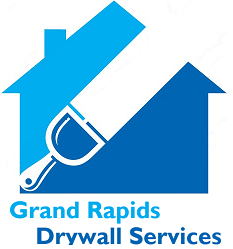City skyline
ButtonHistory of Modern Drywall
Drywall, also known as plasterboard or wallboard, is a common building material used in the construction of interior walls and ceilings. It has become a staple in modern construction due to its ease of installation, durability, and cost-effectiveness.
The history of modern drywall can be traced back to the early 20th century, when it was first developed as an alternative to traditional plaster walls. The origins of drywall can be traced back to the early 20th century, when builders were looking for a faster and more cost-effective alternative to traditional plaster walls. Traditional plaster walls were constructed by applying multiple layers of plaster over wooden lath strips, a process that was time-consuming and labor-intensive. In 1916, the United States Gypsum Company developed the first modern drywall product, known as Sheetrock. Sheetrock was a revolutionary building material that consisted of a layer of gypsum sandwiched between two layers of paper.
This new material was lightweight, easy to install, and provided a smooth and uniform surface for painting or wallpapering. Sheetrock quickly gained popularity among builders and homeowners, and by the 1950s, it had become the standard material for interior walls and ceilings in residential and commercial construction.
In the decades that followed, advancements in technology and manufacturing processes led to the development of new types of drywall products. These included fire-resistant drywall, moisture-resistant drywall, and soundproof drywall, each designed to meet specific building requirements and regulations. These new products expanded the versatility and applications of drywall, making it an even more essential building material in modern construction.
One of the key advantages of drywall is its ease of installation. Unlike traditional plaster walls, which required skilled labor and multiple layers of plaster, drywall can be installed quickly and efficiently by a single person. The process typically involves cutting the drywall panels to size, attaching them to the wall or ceiling studs with screws or nails, and finishing the seams with joint compound and tape. This simplified installation process has made drywall a popular choice for both professional builders and DIY enthusiasts.
Another advantage of drywall is its durability. Modern drywall products are designed to withstand the wear and tear of everyday use, as well as resist mold, mildew, and fire. Fire-resistant drywall, for example, is made with special additives that slow the spread of flames, giving occupants more time to evacuate in the event of a fire. Moisture-resistant drywall is designed to prevent water damage in areas prone to high humidity, such as bathrooms and kitchens. These specialized drywall products have made it possible to use drywall in a wide range of applications, from residential homes to commercial buildings. In recent years, sustainability has become an increasingly important consideration in the construction industry.
As a result, manufacturers have developed eco-friendly drywall products that are made from recycled materials and have lower carbon footprints. These sustainable drywall products are not only better for the environment but also provide the same level of performance and durability as traditional drywall.
Overall, the history of modern drywall is a story of innovation and evolution. From its humble beginnings as a simple building material in the early 20th century, drywall has become an essential component of modern construction. Its ease of installation, durability, and versatility have made it a popular choice for builders and homeowners alike. As technology continues to advance, we can expect to see even more advancements in drywall products that further improve its performance and sustainability.

